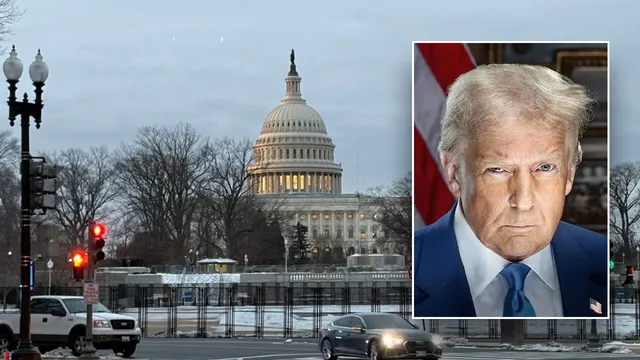
Trump's approval rating hits all-time high despite economic disapproval
2025-03-17 12:01- Recent NBC News poll reveals Donald Trump’s approval rating is at 47%, a historical high in his presidency.
- Amidst this, a majority of voters express disapproval regarding Trump's handling of the economy, with only 18% rating it positively.
- The contrasting views illustrate a divided electorate and raise questions on Trump's overall effectiveness in office.
Express your sentiment!
Insights
In the United States, a recent NBC News poll revealed that Donald Trump's current approval rating has reached 47%, matching his highest approval level during his presidency. The survey, conducted from March 7 to March 11, 2025, indicates a significant level of support among registered voters, particularly among Republicans, with 90% endorsing his performance. Despite this approval, a concerning majority of voters, roughly 54%, disapprove of Trump's handling of the economy, marking a historic low for economic approval. Only 18% of respondents rate the economy as 'excellent' or 'good', reflecting the ongoing economic challenges and the polarized political landscape in the U.S. These numbers are indicative of a broader divide on key issues such as inflation and cost of living, with 55% of voters disapproving of Trump's approach to these challenges. Additionally, voters exhibit a cautious optimism regarding Trump's immigration and border security policies, which have gained approval from 55% of participants. However, discontent around economic management remains a critical issue. The survey results underscore a stark partisan divide, with Trump's approval rating among Democrats at just 4%, the lowest in the past 80 years based on historical comparisons. Over the years, public opinion polls have shown fluctuations in Trump's approval ratings due to various policies and events. As perceptions around the economy and job market continue to shift, the divide in approval ratings between party lines remains pronounced. Trump’s assertive administration and policy direction have left an indelible mark on the political landscape, fuelling debates on his efficacy as president as he navigates these tumultuous times in office. The questions over economic performance and partisan response will likely play pivotal roles in shaping the political narrative leading into the upcoming electoral cycles.
Contexts
The presidency of Donald Trump has been markedly influenced by a significant partisan divide that has characterized American politics in recent years. This polarized environment has led to a reconfiguration of traditional party dynamics, amplifying conflicts over policy, governance, and public discourse. Trump's election in 2016 occurred against a backdrop of intense partisanship, with both major political parties deeply entrenched in ideological battles. As a result, his administration faced unprecedented levels of opposition and scrutiny from Democrats, which affected various aspects of his agenda, including healthcare reform, tax policy, and immigration controls. This divide not only influenced legislative outcomes but also shaped public opinion and media narratives surrounding his presidency. Throughout Trump's term, the partisan divide manifested in stark differences in approval ratings among Democrats and Republicans. Polls consistently showed that party affiliation largely determined individuals' perceptions of both Trump's effectiveness and his policy initiatives. For instance, initiatives like the Tax Cuts and Jobs Act, which passed primarily with Republican support, received substantial criticism from Democrats and was often portrayed in a negative light in Democratic circles. The sealing of party lines around policy issues also extended to investigations and impeachment proceedings, which were largely supported along party lines. Such dynamics underline the extent to which partisanship has polarized the American electorate and has been a defining feature of Trump's time in office. The impact of this partisan divide has extended to Trump’s foreign policy as well, with various strategies, such as his approach to NATO and relations with North Korea, igniting fierce debates among lawmakers and the public. The administration's response to international challenges often carried partisan nuances, affecting bipartisan collaboration on key global issues. Trump's unilateral decisions, such as withdrawing from international agreements, not only drew criticism but also highlighted divisions among allies and critics within the United States. The resulting ideological schism has weakened the traditional bipartisan cooperation historically seen in U.S. foreign relations, raising questions about the long-term implications for America's global standing. Ultimately, the intersection of Trump's presidency and the partisan divide illustrates how deeply intertwined political divisions have reshaped governance and policy in America. The conflict between the two major parties has not only limited legislative achievements but has also fostered a climate of hostility that has permeated public discourse. Looking ahead, it remains essential to consider how this divide will continue to influence policymaking, electoral dynamics, and the broader political landscape in the United States.